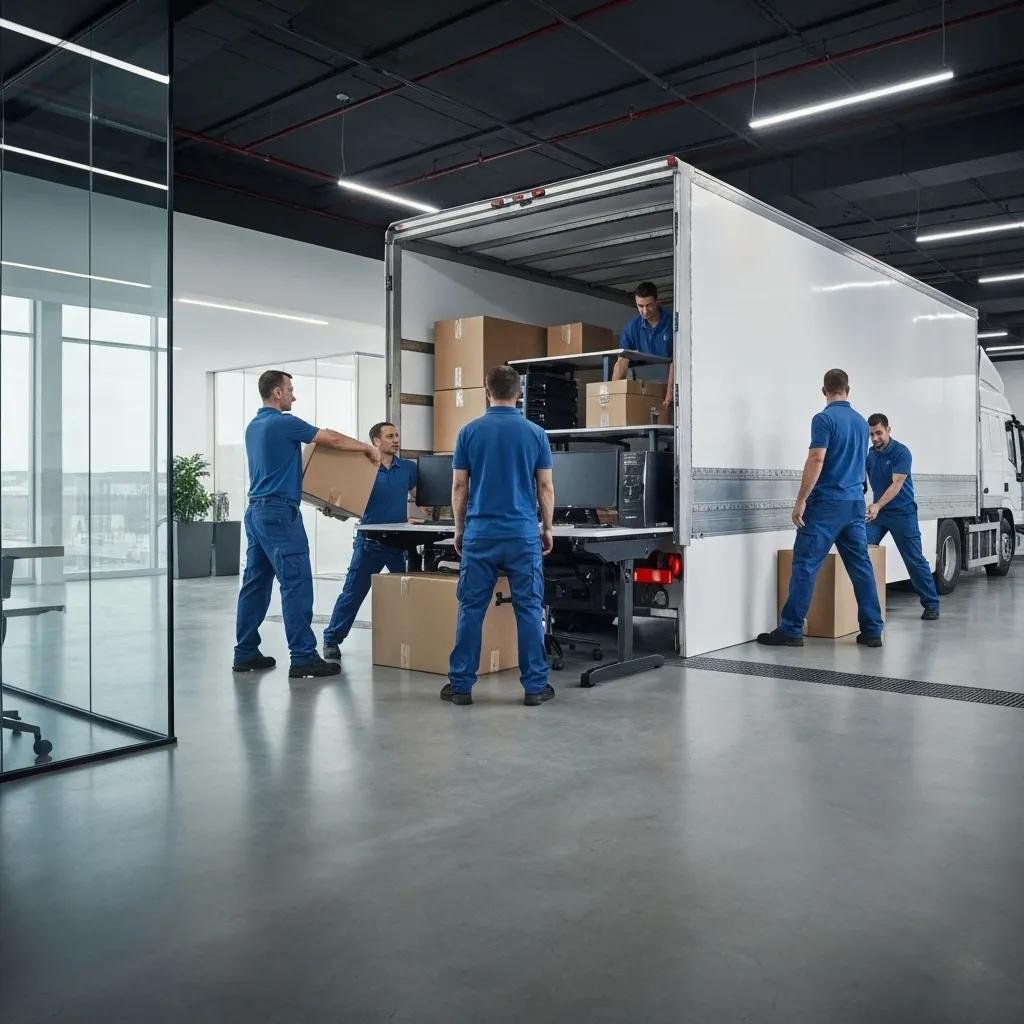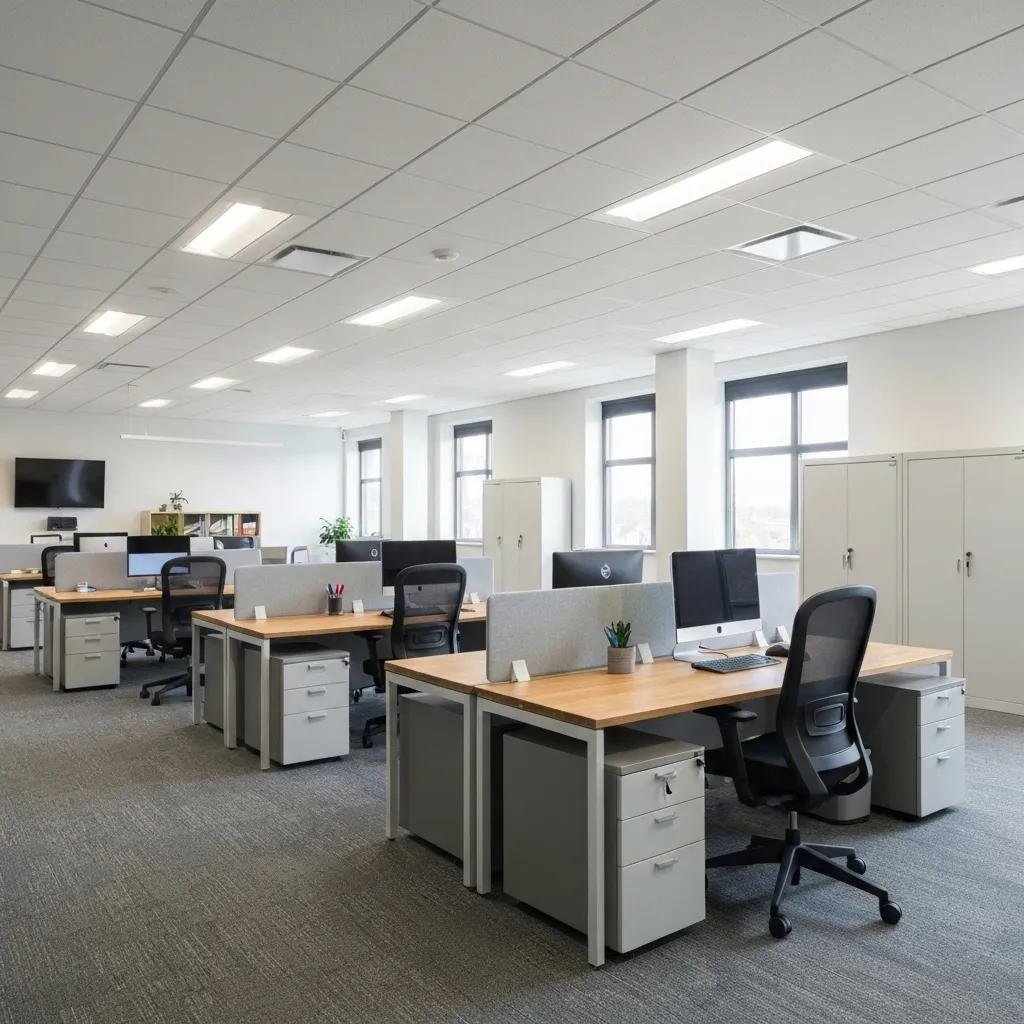Key Factors Influencing Commercial Moving Costs

Key Factors Influencing Commercial Moving Costs: How Much Does Your Office Relocation Really Cost?
Commercial moving expenses breakdown hinge on multiple interconnected factors that determine your overall relocation budget. A clear understanding of these cost drivers helps businesses avoid surprises and stay on plan. This guide examines how office size, distance, labor, packing services, timing, hidden fees, and accurate estimates shape commercial moving costs.
What Are the Main Elements That Determine Commercial Moving Costs?
Commercial moving costs encompass the core expenses required to relocate an office efficiently and safely. Key elements include workspace dimensions, travel distance, crew requirements, packing services, specialty handling, scheduling, insurance, and extra fees.
- Office size and inventory dictate crew size and equipment needs.
- Distance affects mileage rates, fuel surcharges, and possible lodging.
- Labor requirements hinge on hourly rates, mover count, and expertise.
- Packing services include materials and professional handling fees.
- Specialty items like servers or machinery trigger rigging and custom crating.
- Timing and seasonality influence demand-based surcharges.
- Hidden fees such as elevator or stair carry charges add to the sum.
These core determinants set the stage for detailed cost considerations.
Estimating the Cost of a Commercial Move
Commercial moving costs are influenced by several key factors, including the size and complexity of the move, the distance between the current and new locations, and the specific services required, such as packing or IT support. Additional costs can arise from special handling needs for sensitive or heavy items. Understanding these elements helps businesses budget effectively for their relocation.
This source provides a comprehensive overview of the primary factors that determine commercial moving costs, directly supporting the article’s detailed breakdown of expenses related to office size, distance, labor, and specialized services.
How Does Office Size and Inventory Affect Moving Expenses?

Office size and inventory directly influence crew requirements and vehicle capacity by defining the volume of items to transport.
- Square footage determines the number of movers required for efficient loading.
- Furniture and fixture count drives the time needed for wrapping and handling.
- Equipment volume—desks, cabinets, servers—dictates truck size and packing complexity.
By gauging workspace scope and inventory, businesses can forecast labor hours and vehicle needs accurately.
Why Is Distance a Critical Factor in Commercial Moving Costs?
Distance shapes transportation costs through mileage rates and potential overnight accommodations for crews.
Longer hauls incur higher fuel surcharges and may require lodging, reinforcing why proximity matters when planning a move.
How Do Labor Requirements and Hourly Rates Influence Your Budget?
Labor drives a significant portion of commercial moving expenses through crew size and skill level.
- A larger number of movers shortens load times but increases hourly fees.
- Specialized labor for IT disconnection or heavy machinery rigging commands premium rates.
- Overtime or weekend hours raise the base hourly charge by 25–50 percent.
Understanding labor variables helps businesses align staffing needs with budget constraints.
What Role Do Packing Services and Specialty Item Handling Play in Cost?

How Much Do Professional Packing Services and Materials Cost?
Packing services combine labor with materials to ensure safe transit of office assets.
- Standard carton materials cost between $5 and $10 per box.
- Professional packing labor ranges from $30–$50 per hour.
- Unpacking services add an average of $20–$40 per hour.
These costs reflect both the volume of items and the level of protection required for fragile or high-value goods.
Why Are Specialty Items Like IT Equipment and Heavy Machinery More Expensive to Move?
Specialty items require custom crating, rigging, and specialized vehicles, increasing overall moving expenses.
- IT servers demand climate-controlled transport and anti-static packing.
- Heavy machinery often needs crane lifts and reinforced dollies.
- Lab equipment may require shock-absorbent crates and real-time monitoring.
Handling sensitive or oversized assets adds logistical complexity and higher fees.
How Does Timing and Seasonality Impact Commercial Moving Prices?
When Is the Best Time to Schedule a Commercial Move to Save Money?
Off-peak months such as late fall and winter typically offer lower demand and discounted rates.
- Moves scheduled between November and February can be 10–20 percent cheaper.
- Weekdays generally incur lower labor and truck rates than weekends.
- Early-morning start times avoid after-hours surcharges.
Strategic timing can yield significant savings on total relocation costs.
How Does Scheduling Flexibility Affect Your Moving Costs?
Greater scheduling flexibility allows movers to optimize routes and crew assignments, reducing surcharges.
- Booking at least four weeks in advance secures standard rates.
- Avoiding weekends prevents premium fees up to 50 percent higher.
- Last-minute or holiday moves often trigger rush charges.
Flexibility in date and time directly translates to budget-friendly options.
What Hidden Fees and Additional Expenses Should Businesses Expect?
What Are Common Hidden Fees in Commercial Moving?
Unexpected fees often stem from access challenges or special labor demands.
- Elevator or freight-lift fees when carrying bulky items.
- Stair carry charges when elevators are unavailable.
- Long-carry fees for distances over 75 feet from truck to entry.
- After-hours or weekend premiums on hourly rates.
Accounting for these potential extras avoids budget overruns.
How Do Storage, Permits, and Other Services Add to Your Moving Budget?
Additional services such as storage and permits incur daily or flat fees that accumulate quickly.
How Can You Get an Accurate Commercial Moving Estimate and Reduce Costs?
What Should You Expect in a Detailed Commercial Moving Quote?
A thorough quote includes an on-site survey, itemized services, and contingency allowances. A reputable provider such as Horizon Boston Movers will perform a walkthrough, list each labor and material charge, and outline optional services.
- On-site survey to assess inventory and access conditions.
- Itemized breakdown of labor, packing, transportation, and extras.
- Contingency for potential permit or storage fees.
An accurate estimate aligns expectations with actual costs, preventing surprises.
What Are Effective Strategies to Lower Your Commercial Moving Expenses?
Targeted cost-reduction tactics can trim your overall relocation budget without sacrificing quality.
- Declutter unused items to reduce volume and labor hours.
- Self-pack nonfragile items to cut packing service fees.
- Schedule moves during off-peak seasons and weekdays.
- Consolidate shipments to minimize truckloads and mileage.
A well-planned move hinges on understanding each cost driver—from workspace size and distance to labor rates, packing needs, timing, and hidden fees. By securing detailed estimates and applying proven cost-saving tactics, businesses can budget confidently and ensure a seamless office relocation. Partnering with experienced professionals guarantees transparent pricing and efficient execution for every commercial move.


